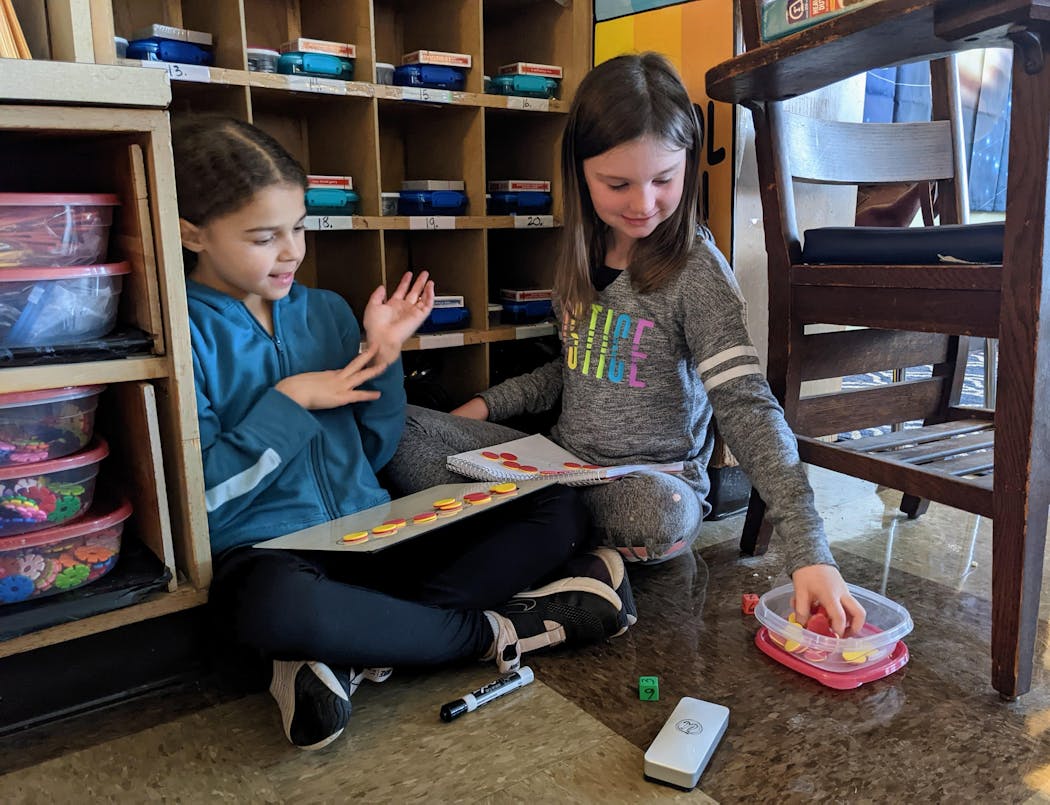CLOQUET, Minn. — Churchill Elementary's 380 students will be clad in blue T-shirts Tuesday when the state's education commissioner pays a visit to the northeastern Minnesota school, named a national Blue Ribbon winner by the U.S. Department of Education this fall.
Decorated bulletin boards line school halls, thanking families, students and staff for their efforts in earning the honor, one of only eight in Minnesota and fewer than 300 across the country.
"We aren't searching for awards, but it's a really nice testament to our high-quality school district," said Principal David Wangen.
Recognized for its success in narrowing achievement gaps between student groups, Churchill leaders credit a long history of data-intensive teacher retreats to study student progress, and focused attention on mental health and relationships with kids.
"Everybody has the ability to achieve and succeed," said Phil Beadle, the school's American Indian Education teacher. "We just have to find what unlocks that."
The K-4 school, next to a city park and near the Fond du Lac Band of Lake Superior Chippewa's reservation, enrolls about 20% Native American students, who typically test well above the state averages for Native American students in reading and math assessments.
The school has for two decades used small groups for those who need intervention, letting achievement data guide who needs the extra instruction during the school day.
Beadle, who grew up on the Fond du Lac Reservation, makes Indigenous culture a part of his teachings. He goes into classrooms to work with all kids, and he also leads small groups in his room, a cozy space decorated with dream catchers and Ojibwe phrases.
"Relationship-building in this school is such an important piece of student success," he said. "Before they can learn, they have to trust you and they have to feel safe."
The school also has a classroom called a "remedy room," staffed by a social worker. Kids who need to calm down, work through a problem or burn off energy are sent to or can ask to see Don Gentilini. The darkened room is equipped with "calming cubbies" that have comfortable places to sit, along with puzzles, a weighted blanket, fidget toys, a small trampoline and an exercise bike.
"We try not to make it Club Med, but it's to support anything that's needed at the time," Gentilini said. "Sometimes it's just five minutes to be heard."
The room also stores extra coats, boots and other outdoor gear, which is often a window into who just forgot something, or who might not have what they need at home.
The effects of the pandemic and remote learning on achievement gaps were "simply horrific," for students, said Janet Husby, who has taught third grade at Churchill for 35 years.
It laid bare the range of family situations and technology access between students, she said, and coming back after months of what amounted to inequitable learning meant reteaching the basics of in-person classroom life, on top of playing academic catch-up.
While homing in on student learning data is a crucial part of closing gaps, Husby said, it also requires using different ways to learn, like getting kids out of their desks and pairing them with new partners to do hands-on work.
"There's a huge range of abilities and skills," she said. "But if we can find an activity and vary it a bit, even those who are struggling will be able to come along. And if they know we feel they can do it, they rise to that."

Trail section at one of Minnesota's most iconic spots closing for rehab

Will 'shotgun only' zone for deer in southern Minnesota be abolished?

Four Minnesotans catch salmonella in outbreak linked to basil sold at Trader Joe's



